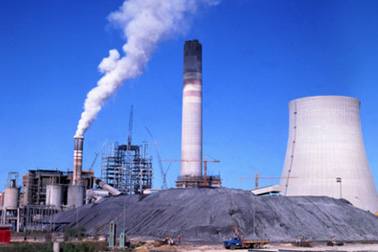
The Environmental Integrity Project released results of water testing last week indicating that coal ash from power plants in 10 states had contaminated nearly 20 sites previously overlooked by the U.S. Environmental Protection Agency.
EIP joined calls by the Sierra Club and Earthjustice right here on Care2, among others, for EPA to enact strict regulations of coal ash disposal.<b
In the last 10 years, the Environmental Integrity Project (EIP) has found groundwater contamination from 90 coal ash ponds or landfills around the United States. “The more we look, the more we find,” the group writes.
In their latest report, EIP identified the following new contamination sites:
Illinois (7): Dallman Power Station, Joliet Station, Joppa Plant, Meredosia Power Station, Pearl Station, Powerton Station, and Waukegan Station;
South Carolina (3): Cross Station, McMeekin Station, and Winyah Station;
Iowa (2): Fair Station and Prairie Creek Generating Station;
Texas (2): Coleto Creek Station and W.A. Parish Station;
Florida (1): Plant Crist;
Georgia (1): Plant Yates;
Indiana (1): soil at an urban rail trail in Bloomington;
Kentucky (1): Paradise Fossil Plant;
Nevada (1): North Valmy Station; and
Tennessee: (1) Allen Fossil Plant.
Coal Ash: A Clear and Present Danger
Coal ash is what’s left over after coal is burned in a power plant or the dust that gets caught in the pollution control equipment (also known as fly ash). While the coal and power industries claim ash is benign, it can contain dozens of hazardous heavy metals, including arsenic, lead and mercury, as well as carcinogens such as dioxins and polycyclic aromatic hydrocarbon (PAH) compounds.
Coal ash is often stored at or near power plants in sludge ponds, one of which famously collapsed in 2008, burying 400 acres of Tennessee homes, farmland and the Emory River under up to a billion gallons of ash slurry 6 feet deep in places. More recently, a bluff in Wisconsin containing coal ash landfill collapsed into Lake Michigan.
The EIP report highlights that it doesn’t take an event like a landslide or sludge-pond dam collapse to contaminate nearby water supplies. “We already have here a clear and present danger to America’s public health,” said EIP’s Coal Combustion Waste Initiative Director Jeff Stant.
Congress Threatens to Block EPA Coal Ash Regulations
Just weeks before the Wisconsin spill, the U.S. House of Representatives had passed a bill that, if passed by the Senate and signed into law, would block EPA’s authority to regulate coal ash completely.
“The EPA has been trying to enact national protections to stop this kind of disastrous spill from happening again, ever since the TVA disaster in 2008, and our Congress has been blocking them every step of the way. As a result, communities across the nation remain at risk and unprotected,” said Mary Anne Hitt, Director of the Sierra Club’s Beyond Coal Campaign in a statement about the Lake Michigan ash spill.
“[I]t is no solution for Congress to hand authority for addressing the problem permanently to states that have refused to enforce common-sense standards for the past 30 years and hope that the whole problem then somehow goes away,” said Stant.
Take Action! No More Spills: EPA Must Regulate Toxic Coal Ash

